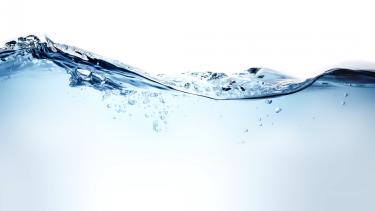
District Water Info
The Abbotsford School District is committed to the health and safety of all its students and staff.
At the request of the Provincial Health Officer via the Ministry of Education to all school districts in the Province, the Abbotsford School District has established a plan to continuously evaluate the water quality in all District buildings and schools, implement a mitigation strategy and address future challenges.
Our District took a proactive approach to this request and implemented cross-district water testing, which began in July 2016.
Using the Canadian Drinking Water Quality Guidelines as the standard measurement, active drinking stations (i.e.. fountains, teaching kitchens, staff rooms) were targeted. Early test findings, that were obtained pre-flush on stagnant water, showed higher than acceptable lead amounts in drinkable water sources. This was followed by a 2-minute flush test, with results indicating that all sites achieved safe drinking levels. Stagnant water sitting in the pipes is the primary concern.
In consultation with Fraser Health Authority, the District has developed an effective mitigation strategy to deal with this issue. Here is what Mark Zubel, Regional Manager of the Drinking Water Program at Fraser Health Authority had to say about our process:
"On August 9, 2016 a letter was sent to the Abbotsford School District indicating that Fraser Health would be pleased to work with your School District to ensure that metal levels (particularly Lead), in drinking water consumed in your schools are compliant with the Guidelines for Canadian Drinking Water Quality. It was my pleasure to meet with staff from the Abbotsford School District on Wednesday, August 31, 2016 and review the prioritized approach being taken; results of sampling and chemical testing conducted to-date; practical, appropriate and reasonable options for mitigative strategies where warranted and the District’s short term and long term management plans to move forward on various options. It was encouraging to see that the District has taken and plans to take further effective proactive measures to ensure that drinking water that is provided to students and staff is safe."
Updates
⏩ Pinchin West - Drinking Water Quality Report
⏩ October 2016 - Update provided to Board of Education
⏩ November 2016 - Update provided to Board of Education
⏩ April 2017 - Final Report to Board of Education
⏩ March 2022 - Updated Testing Report
Facts & FAQs
How did lead get into the water?
Buildings built prior to 1989 have copper piping. Standard construction practice was to externally solder pipes with a compound that included lead. It is important to recognize that there are no lead pipes in the Abbotsford School District water system. But like most buildings older than 1989, there is lead in the solder.
In 1989, the BC Plumbing Code restricted the use of lead components in solder in all new building water pipes.
Is Abbotsford water safe?
Yes! Abbotsford has some of the best water in the country. According to the City of Abbotsford, the area receives the primary source of water from Norrish Creek, supplemented by Cannell Lake and 19 groundwater wells. The Norrish Creek source is filtered (either by slow sand or ultrafiltration membranes) and chloraminated prior to distribution. Chloramination is also practiced at Cannell Lake and most wells.
What Schools were part of the flushing program?
There were 21 sites that implemented a flushing program as a temporary short term solution to eliminate any stagnant water in the piping system. These sites included: These sites include: Abbotsford Arts, the old section of Abbotsford Senior, Aberdeen, Aboriginal Education, Bakerview, Centennial, Chief Dan George, CORE, John Maclure, Mt. Lehman, North Poplar, Ross, South Poplar, School Board Office, STaRT, Ten Broeck, Terry Fox, Upper Sumas, Virtual, W.A. Fraser, and W.J. Mouat.
This temporary solution of flushing the water system was only in place until permanent repairs could be made. Those repairs have now been completed at all 21 sites and so a flushing program is no longer needed.
What happened to the school fountains and faucets?
Upon receiving the initial test results, the District took immediate action to implement a flushing program at all of the necessary sites to mitigate any trace of potential contaminants in the water. Additionally, fountains or faucets where students and/or staff can access drinking water, and where post-flush results were above acceptable drinking levels, were shut off from service and restricted until repairs could be made.
The Facilities & Maintenance department then evaluated all drinking water locations to determine appropriate measures for remediation. Repairs were undertaken to address all areas of concern. Additional water testing was conducted after the repairs were completed to ensure that the water at all of the District’s sites now meets the Canadian Drinking Water Quality Guidelines. Some examples of the types of repairs completed include:
- New water lines/pipes to the portable water fixtures;
- Installation of new drinking fountains, bottle filling stations and/or faucets at potable water sinks;
- Installation of fountain filtration systems;
- Installation of automatic flushing devices;
- Removal of the fountain/sink—where it is underutilized;
- Installation of signage at drinking fountains instructing users to run water for 2 minutes before drinking until such time that the unit and/or piping is replaced.
How were these upgrades and repairs be funded?
The Abbotsford School District applied to the Ministry of Education for additional funding to help pay for these repairs through the School Enhancement Program. Of the 1.1 Million dollars spent on this project, $840,000 was provided by the Ministry and the remainders was funded internally by the District through a combination of the Annual Facilities Grant and the Facility and Transportation Department’s Operating Budget.